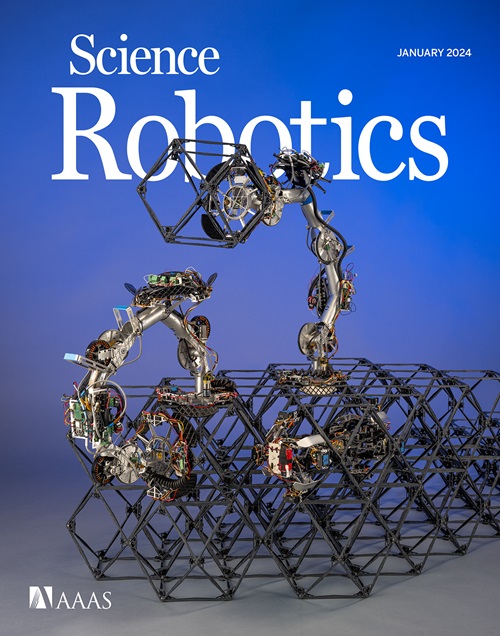通过集体学习扩展机器人的思维
IF 27.5
1区 计算机科学
Q1 ROBOTICS
引用次数: 0
摘要
目前采用单一人工智能(AI)模型的通才机器人行为的趋势是不可持续的。我提倡一种范式转变,即为集体机器人智能提供分布式架构。具有专门的相互依赖组件的模块化“机器人混合”方法可以实现超线性增益,提供可伸缩性、适应性和学习复杂交互技能方面的好处。本文章由计算机程序翻译,如有差异,请以英文原文为准。

Extending robot minds through collective learning
The current trend toward generalist robot behaviors with monolithic artificial intelligence (AI) models is unsustainable. I advocate for a paradigm shift that embraces distributed architectures for collective robotic intelligence. A modular “mixture-of-robots” approach with specialized interdependent components can achieve superlinear gains, offering benefits in scalability, adaptability, and learning complex interactive skills.
求助全文
通过发布文献求助,成功后即可免费获取论文全文。
去求助
来源期刊

Science Robotics
Mathematics-Control and Optimization
CiteScore
30.60
自引率
2.80%
发文量
83
期刊介绍:
Science Robotics publishes original, peer-reviewed, science- or engineering-based research articles that advance the field of robotics. The journal also features editor-commissioned Reviews. An international team of academic editors holds Science Robotics articles to the same high-quality standard that is the hallmark of the Science family of journals.
Sub-topics include: actuators, advanced materials, artificial Intelligence, autonomous vehicles, bio-inspired design, exoskeletons, fabrication, field robotics, human-robot interaction, humanoids, industrial robotics, kinematics, machine learning, material science, medical technology, motion planning and control, micro- and nano-robotics, multi-robot control, sensors, service robotics, social and ethical issues, soft robotics, and space, planetary and undersea exploration.
 求助内容:
求助内容: 应助结果提醒方式:
应助结果提醒方式:


